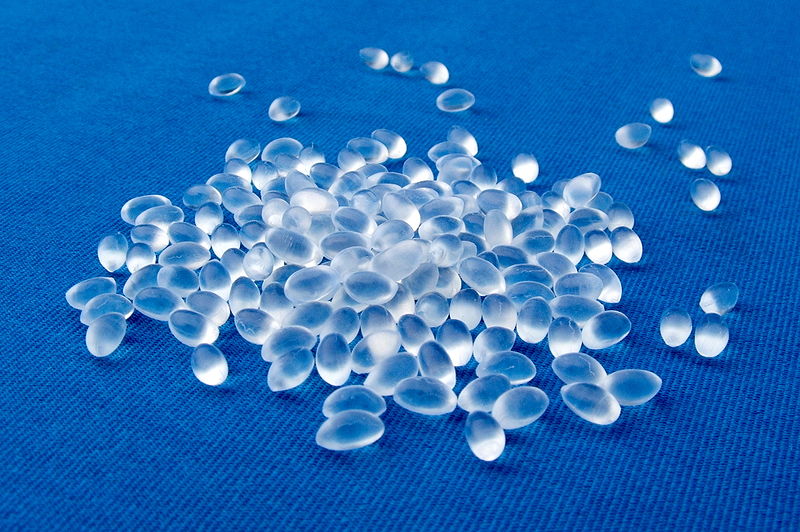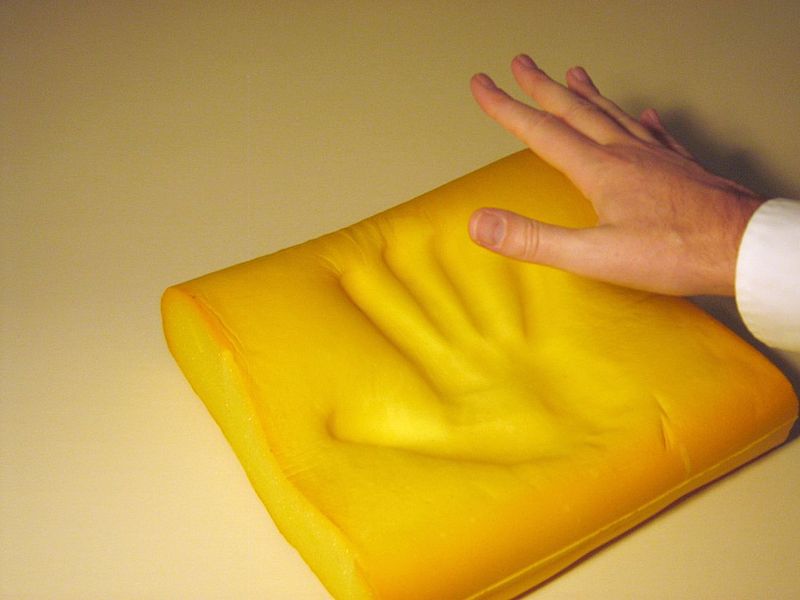TPU and PU are very important polymers that have a wide range of applications in different industries. TPU stands for thermoplastic polyurethanes while PU stands for polyurethanes. TPU is a type of thermoplastic elastomer. It has many improved properties than other thermoplastic elastomers. PU is a polymer that is different from other polymer materials based on its nomenclature; this polymer is named based on the urethane linkages present in the polymer. There are many differences between these two types. The main difference between TPU and PU is that TPU has no cross-links whereas PU can have cross-links based on the type of polyols used.
| TPU | PU |
| TPU stands for thermoplastic polyurethane | PU stands for polyurethane |
| A thermoplastic material | Most are thermosets, but some are thermoplastic |
| Block copolymer | Belongs to a class of reaction polymers |
| Contains hard and soft segments | Contains urethane linkages |
| Made from polyether or polyester (soft segments) or polycaprolactones | Made from polyols and isocyanates |
| Has no cross links | Can have cross-links based on the type of polyols used |
What is TPU
TPU stands for thermoplastic polyurethane. It is a type of thermoplastic elastomer. Hence, it is elastic and melt-processable. It has many favorable properties such as elasticity, transparency, resistance towards oils and abrasion resistance. TPU is a form of block copolymer (contains soft and hard segments).
TPU can be colored through a number of processes, and it is also extremely flexible. This is mainly due to the composition of hard and soft segments. The hard parts are either aromatic or aliphatic. They are generally aromatic, but the aliphatic hard segments are preferable when the color and clarity retention in exposure to sunlight is more important.
in oil resistance. Some applications of TPU are given below.
- Wire and cable solutions – provide toughness and flexibility along with extended durability
- Film and sheet – provide durability and flexibility
- Hose and tubes
- Sporting goods swim fins and goggles

TPU Chips
However, TPU has a high hardness when compared to other types of thermoplastic elastomers. When burnt, TPU burns with an irritating odor. The products made of TPU feel rougher.
What is PU
PU stands for polyurethane. It is a polymer material composed of urethane linkages. These are also called carbamate linkages. Most polyurethanes are thermosets. They do not melt when heated. But there are some thermoplastic polyurethanes as well.
This polymer is different from many other polymers due to the absence of a urethane monomer (other polymers are named according to the monomer used for the production; for example, polyethylene is made from ethylene monomers). The polymer is named based on the repeating linkages present in the polymer, which are urethane linkages (-R-NH-C(=O)-O-).

Figure 2: Memory Foam Cushion made of PU
Polyurethanes are produced from the reaction between alcohols (having more than two –OH groups, also known as polyols) and isocyanates (having more than one reactive isocyanate group –NCO). The linkage that is formed between alcohol and isocyanate is a urethane linkage. The production of PU has three major steps.
Production of Isocyanates
For the production of isocyanates, two major compounds are used; TDI (toluene diisocyanate), and MDI (methylene diphenyl diisocyanate). TDI is mainly used in the production of low density, flexible foam or cushions. MDI is generally used in the production of rigid foams.
Production of Polyols
The number of –OH groups present per monomer is important in determining the degree of crosslinking between the polymer molecules. This affects the mechanical properties of the polymer material.
Production of PU
A linear PU is formed if the polyols have two –OH groups per monomer and are mixed with either TDI or MDI. These polyurethane linkages are formed via condensation polymerization. If the polyols contain more than two –OH groups per monomer, then a cross-linked polymer material is produced.
Difference Between TPU and PU
Definition
TPU: TPU stands for thermoplastic polyurethane.
PU: PU stands for polyurethane.
Nature
TPU: TPU is a thermoplastic material.
PU: Most polyurethanes (PU) are thermosets, but there are some thermoplastic materials as well.
Category
TPU: TPU is a block copolymer.
PU: PU belongs to a class of reaction polymers.
Composition
TPU: TPU contains hard and soft segments.
PU: PU contains urethane linkages.
Raw Materials
TPU: TPU is made from polyether or polyester (soft segments) or polycaprolactones.
PU: PU is made from polyols and isocyanates.
Cross-links
TPU: TPU has no cross links.
PU: PU can have cross-links based on the type of polyols used.
Conclusion
TPU stands for thermoplastic polyurethane. It is an improved form of thermoplastic elastomer. It is different from usual elastomers due to the absence of crosslinks. PU stands for polyurethanes. This polymer is different in its nomenclature because it is named considering the repeating urethane linkages. The main difference between TPU and PU is that TPU has no cross-links whereas PU can have cross-links based on the type of polyols used.
Reference:
1. Lazonby, John. “Polyurethanes.” The Essential Chemical Industry online, Available here.
2. “Engineered Polymers.” Thermoplastic Polyurethane (TPU) and Beyond – Lubrizol, Available here.
3. Polyurethanes.” Thermoplastic Polyurethane, Available here.
Image Courtesy:
1. “Chips TPU” By Luigi Chiesa – Own work (CC BY-SA 3.0) via Commons Wikimedia
2. “MemoryFoam-slow” By Johan – Own work (CC BY-SA 3.0) via Commons Wikimedia